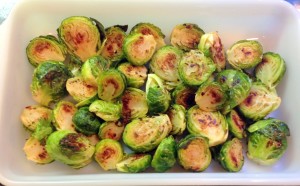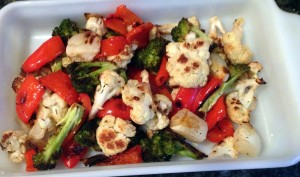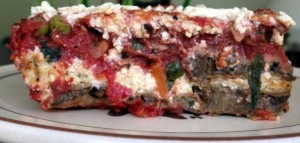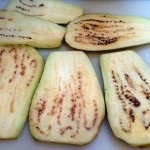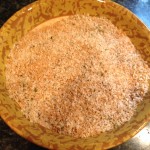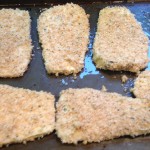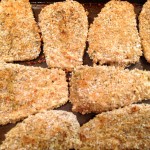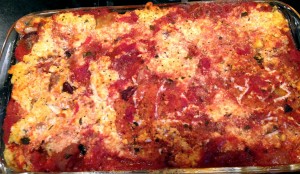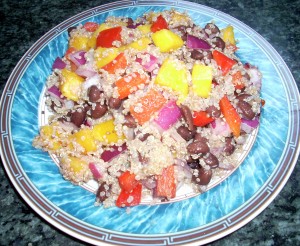Roasting vegetables releases their natural sugars, concentrating and intensifying flavors. Their exteriors get nice and caramelized, while the insides remain moist. The result is quite delicious and a great way to enjoy eating more vegetables. Roasting is so simple to do. Here are a few tips to help you get great results.
- Initial prep – Wash vegetables, blot dry (if too wet, moisture will cause them to steam rather than roast), and CUT INTO SIMILAR SIZE PIECES, so that they will cook evenly.
- Coat LIGHTLY with oil. You still can get a good result with no oil, but oil helps the vegetables brown more evenly, and I think creates a little more intense flavor. However a little oil goes a long way, so just DRIZZLE, and toss to coat evenly. Not only is a lot of oil not good for you, it will make the vegetables greasy. I generally use a neutral oil, such as organic Canola, that has a high enough smoke point for the high heat of roasting. I use about 1.5 tablespoons of oil for a large tray, about 1.5 pounds, of vegetables.
- Season with salt and pepper. I always use freshly ground black pepper, and prefer coarse sea salt (about a 1/2 teaspoon of salt for the tray of vegetables). Using just salt and pepper is enough to bring out amazing flavor, but you can try endless variations by optionally adding any spices and dry or hearty fresh herbs of choice. (Delicate fresh herbs like parsley and basil are best added after roasting because the high heat would destroy them.)
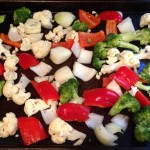
- Use an appropriate pan. The pan should have low sides to allow the heat to hit the vegetables directly. A simple sheet pan is ideal. Also, the pan needs to be large enough to spread out the vegetables in a single layer.

- Optimally lay out the vegetables. Most important, DO NOT CROWD. You want them to roast in direct heat, not steam. Lay vegetables in a single layer. Use additional pans if necessary. If your vegetables are cut such that they have a flat side, lay them flat side down. It just helps get a nice, even browning. And if you have some larger pieces, place them at the perimeters of the pan, which tend to get the hottest.
- Use high enough heat and move the vegetables. Most vegetables roast well at 400-450 degrees Fahrenheit. Preheat your oven to the desired heat and try to maintain the heat by keeping the oven door closed as much as possible. For even cooking, about halfway through the roasting time, you’ll want to TOSS the vegetables. It’s also a good idea to rotate the pan, since the back of the oven is a little hotter. Ovens loose heat quickly when you open the door, so keep door opening to a minimum, and close the door while you’re tossing the vegetables. Generally speaking, it‘s best to place your pan in the center of the oven for even cooking. However if you have multiple pans and need to use multiple racks, just alternate the pans at the halfway point.
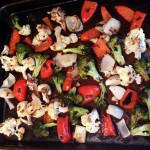
- Length of time – There’s a lot of variation depending on the vegetable and personal preference. Personally, I roast most vegetables for between 10-30 minutes. Harder, denser vegetables such as root vegetables, I’ll roast longer, typically 30 – 50 minutes. I roasted the Brussels sprouts in the photo for only 12 minutes at 400 degrees Fahrenheit. (Some people prefer to roast theirs much longer.) I roasted the mixed vegetables pictured for about 25 minutes at 425 degrees Fahrenheit.
